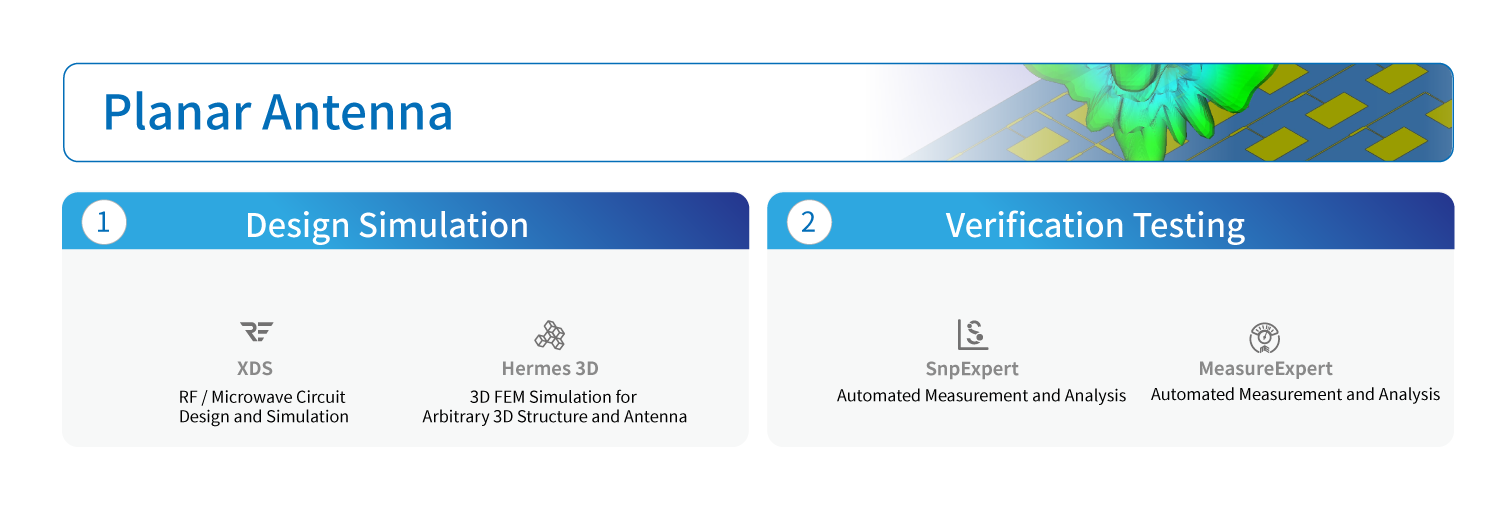
Planar Antenna
Background

With the rapid development and widespread application of communication technology, 5.5G\6G has become the focus technology in the current communication field. Low power consumption, high bandwidth, and low latency are important features of 5G communication. To achieve Gbps+ transmission rates, the millimeter-wave frequency band is the best choice. To overcome path loss, beamforming is one of the key core technologies of 5G. Achieving beamforming requires the design of phased array antennas with high gain, high power capacity, and wide scanning angle.
Millimeter-wave radar: With the active promotion and application of new energy vehicles, one of the most exciting technologies is autonomous driving technology. Millimeter-wave radar is an essential sensor for the task of target detection in complex scenarios for autonomous driving. It uses the Doppler effect of the reflection signals from moving objects to measure speed and distance, thereby achieving target recognition. As an important component of millimeter-wave radar, the performance of the array antenna, angle resolution, and bandwidth determine the accuracy and sensitivity of the radar in identifying moving objects.
To effectively meet the complex scenario requirements of 5G communication beamforming and autonomous driving target recognition, antenna engineers need to pre-estimate and tune the performance of millimeter-wave array antennas. They use various simulation methods to evaluate performance in different scenarios.
Solution

For the design simulation of millimeter-wave array antenna-related scenarios, Xpeedic has introduced the Hermes and XDS design simulation platforms, which possess independent intellectual property rights. These platforms integrate 3D full-wave electromagnetic field analysis tools based on FEM and MoM, along with field-circuit co-simulation features. They cover full-stack solution scenarios from chip-on-board, packaging, to system, providing customers with design simulation possibilities for PCB antennas, AIP antennas, etc. The platform can provide different electromagnetic algorithms and post-processing solutions for various user scenarios, enabling rapid and high-precision solving for diverse contexts. Users can utilize the platform for parametric modeling and importing design files. Catering to the array antenna simulation scenario needs, the platform allows for the setting of various boundary conditions such as radiation, PML, and master-slave boundaries. It also supports the flexible import of array feeding factor scripts, unit cell array designs, and parametric configuration of sources, facilitating rapid design evaluation and verification of array algorithms for users. The platform also integrates field-circuit co-simulation analysis capabilities, which can be used for system-level and active analysis of array antennas.

